Portrait of a woman Pencil drawing.
Signed lower left PAL.
Inscription on the back in pencil Retrospective exhibition P.A Laurens March April 1936, signed with the PAL monogram.
Frame under glass in gray painted wood.
Dimensions: H. 25 cm, W. 23 cm
Dimensions with frame: H. 46 cm, W. 44 cm Slight folds.
Paul Albert LAURENS
French painter, engraver, and illustrator, a childhood friend of André Gide, whose iconic portrait he left at the Musée d'Orsay, and author of several works for the decoration of the Capitole de Toulouse.
After attending the Alsatian School on Rue d'Assas, where he became friends with André Gide, Paul Albert Laurens continued his training at the Académie Julian and then joined the École des Beaux-Arts de Paris, where his teachers were Fernand Cormon and Benjamin-Constant. His father, the renowned history painter Jean-Paul Laurens, also taught him.
Winner of the Second Prix de Rome in 1891, he was accepted that same year into the Salon des Artistes Français, where he would later win several medals.
A painter of portraits, allegorical works, and sometimes genre scenes, he was commissioned in 1912 by the Municipality of Toulouse to decorate the Capitole alongside his father and Ulysse Ravaut. For the Grand Staircase, he painted Music, Poetry, and the Coronation of Clémence Isaure.
His many talents were exercised in a variety of fields.
In 1900, he made a foray into the world of posters to illustrate Ramses, a play by Joseph de Pesquidoux that would be performed in the Grand Egyptian Theater at the Paris World's Fair. He did it again in 1926, adopting the figure of a beautiful Hispanic woman depicted in Art Nouveau scrolls for the poster for the Théâtre de la Gaité, Spanish Wounded.
During the First World War, along with other artists such as Forain, Dunoyer de Segonzac, and Devambez, he designed camouflage patterns for the Allied armies.
In 1932, he designed the image of the Peace stamps, which depict a woman draped in the antique style holding out an olive branch.
Bibliophiles also appreciated him for his engravings of works by Anatole France, Théophile Gautier, and especially Pierre Louÿs, including the Songs of Bilitis, adorned with a portrait of Bilitis drawn by Paul Albert Laurens. The young poet was inspired by Mériem ben Atala, a young courtesan dancer whom Laurens and Gide frequented when they settled in Biskra, Algeria, during their great initiatory journey that took them from North Africa to Italy in 1893.
Paul-Albert Laurens accumulated numerous honors and positions throughout his career. A member of the Society of French Artists, a member of the Institute, decorated with the Legion of Honor, and also a professor at the Académie Julian and the École Polytechnique.
The portrait model, reminiscent of Louise Brooks, is depicted frontally, sporting a 1930s-style boyish hairstyle, her short hair topped with a braid that gives her an Eastern European look. Her gaze is pensive, fixed into the distance, topped with thick eyebrows, while her small lips are slightly parted.



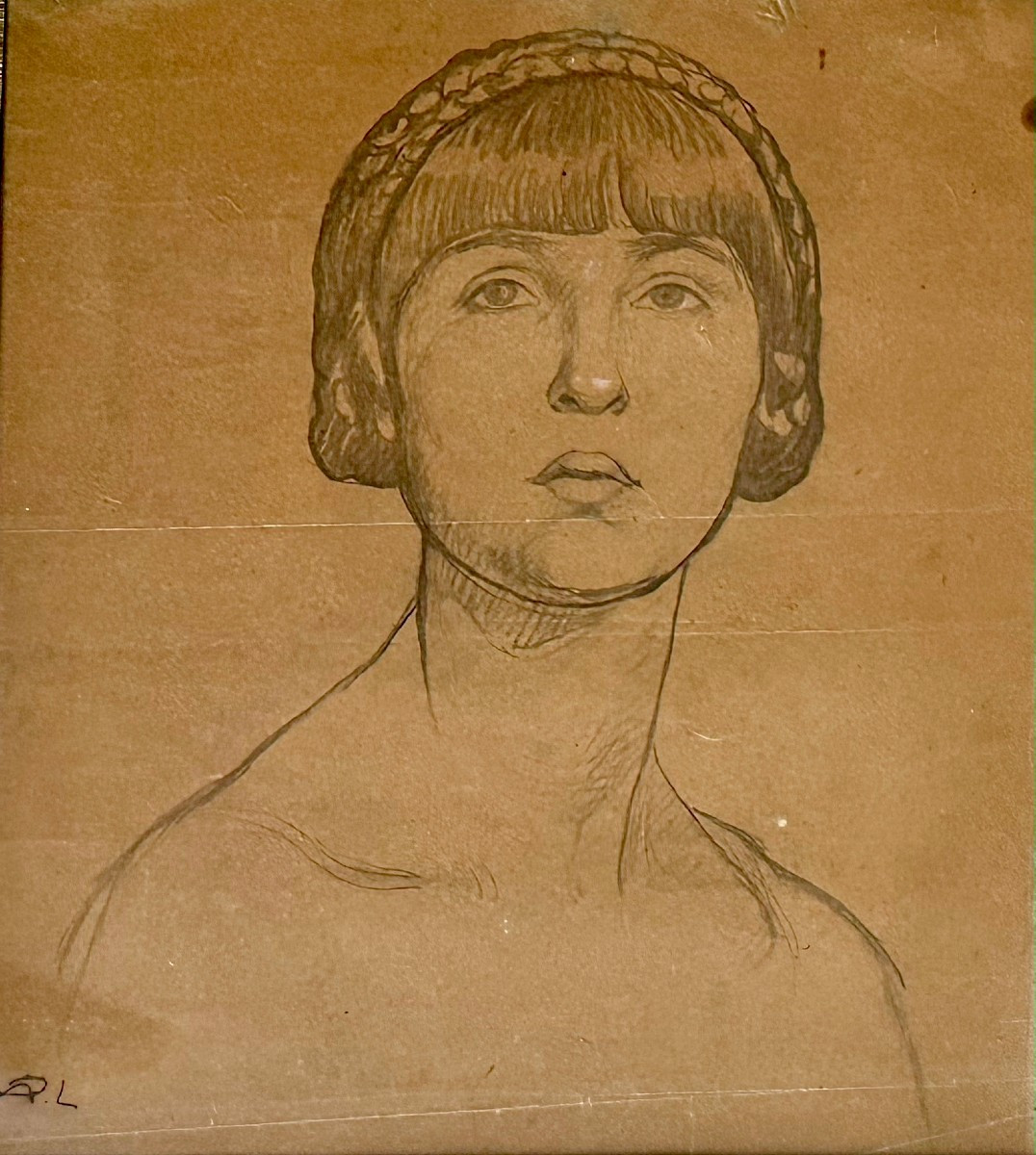
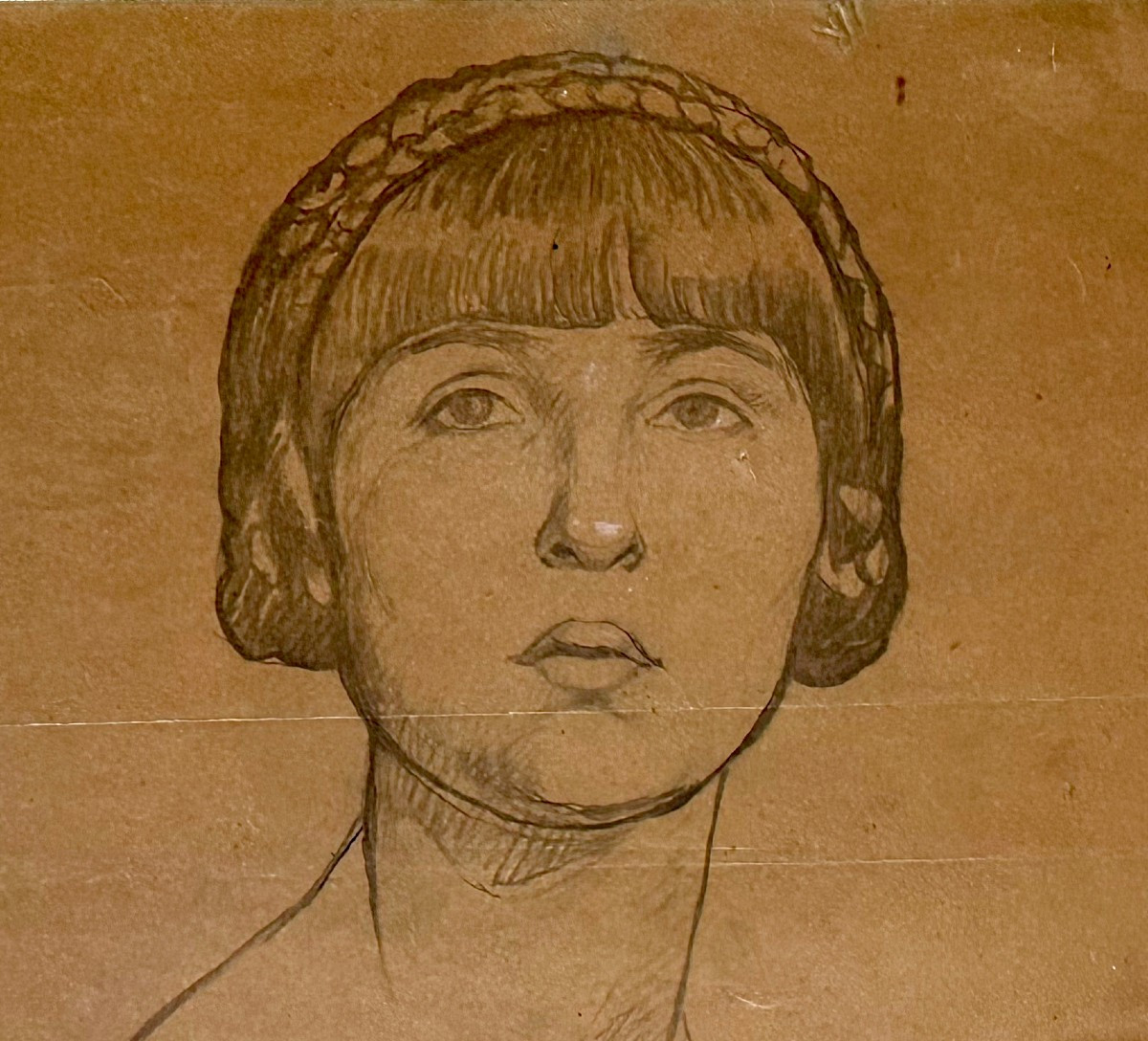
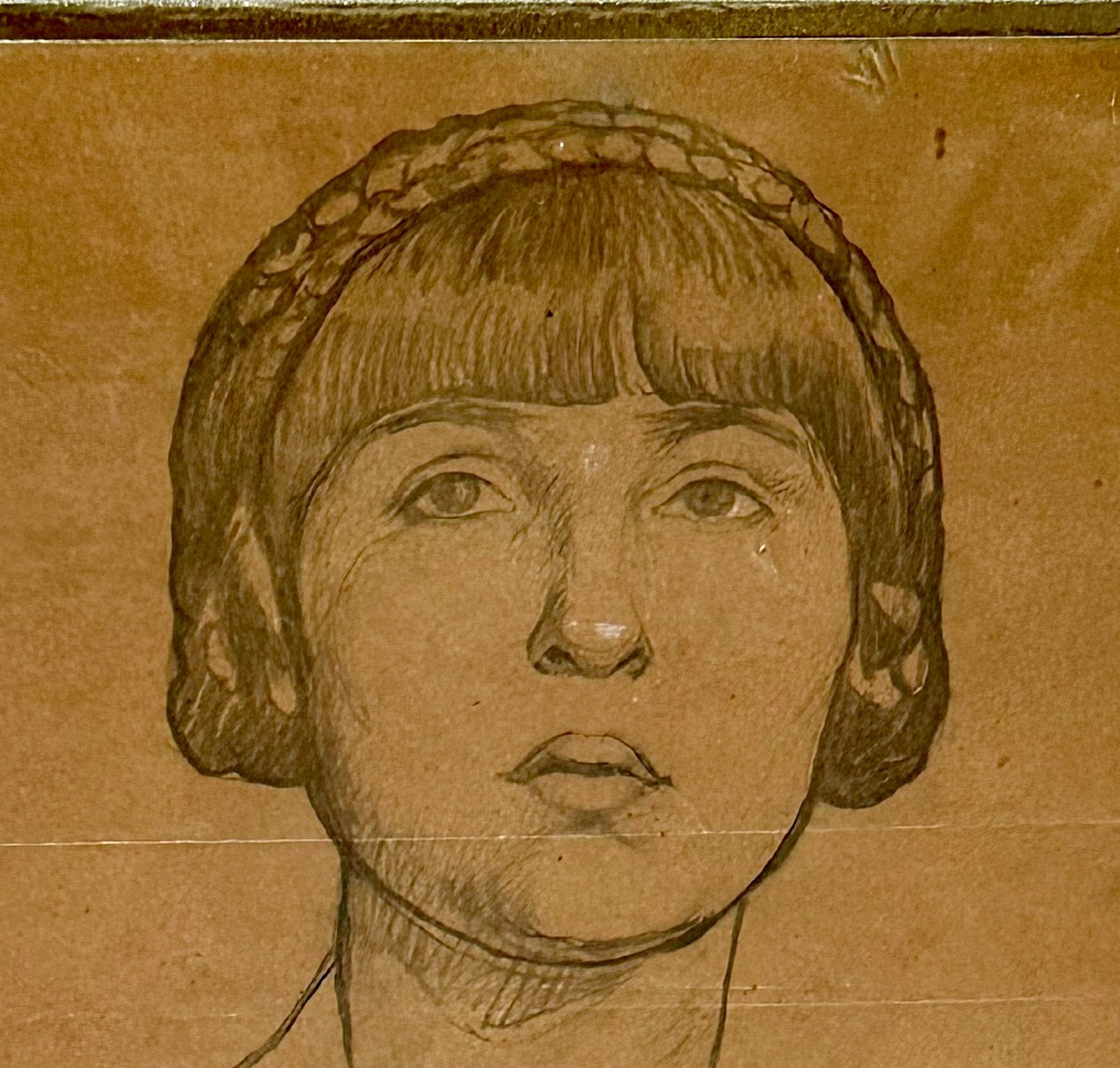
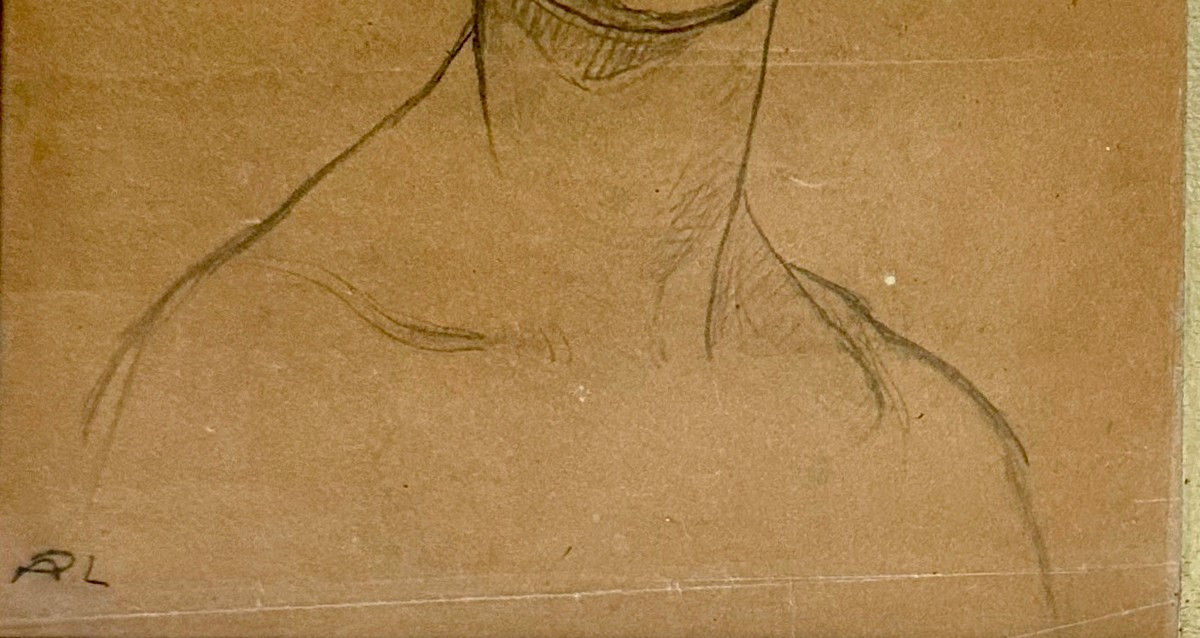

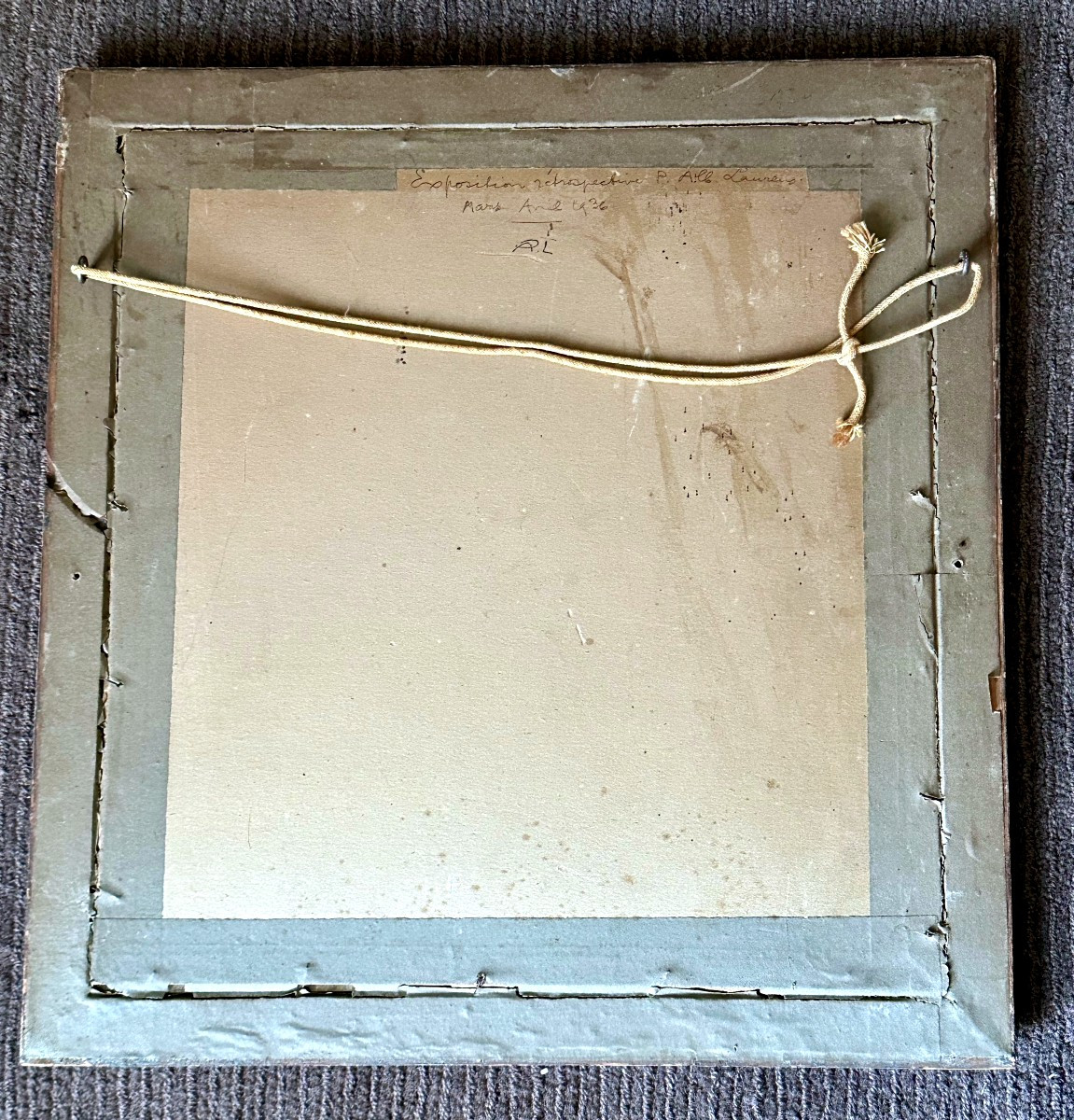









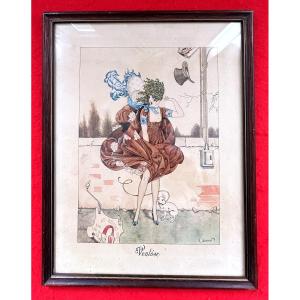
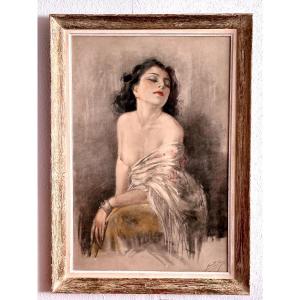
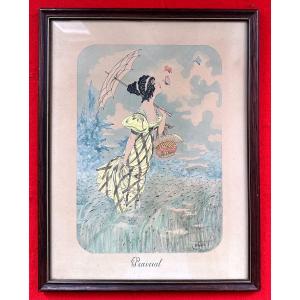

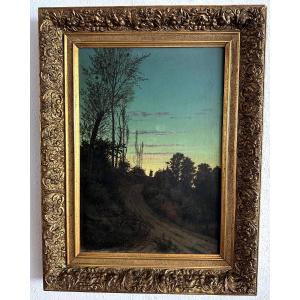
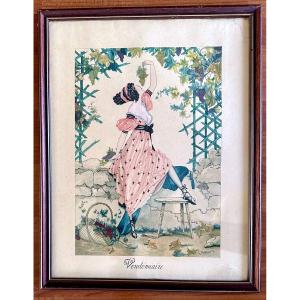
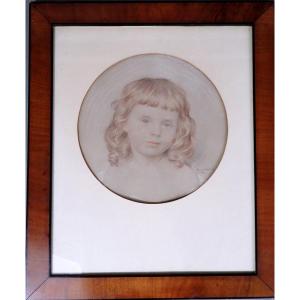






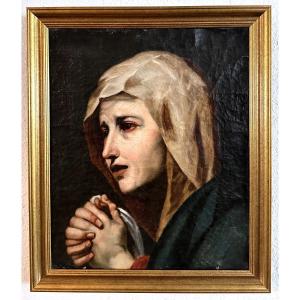








 Le Magazine de PROANTIC
Le Magazine de PROANTIC TRÉSORS Magazine
TRÉSORS Magazine Rivista Artiquariato
Rivista Artiquariato